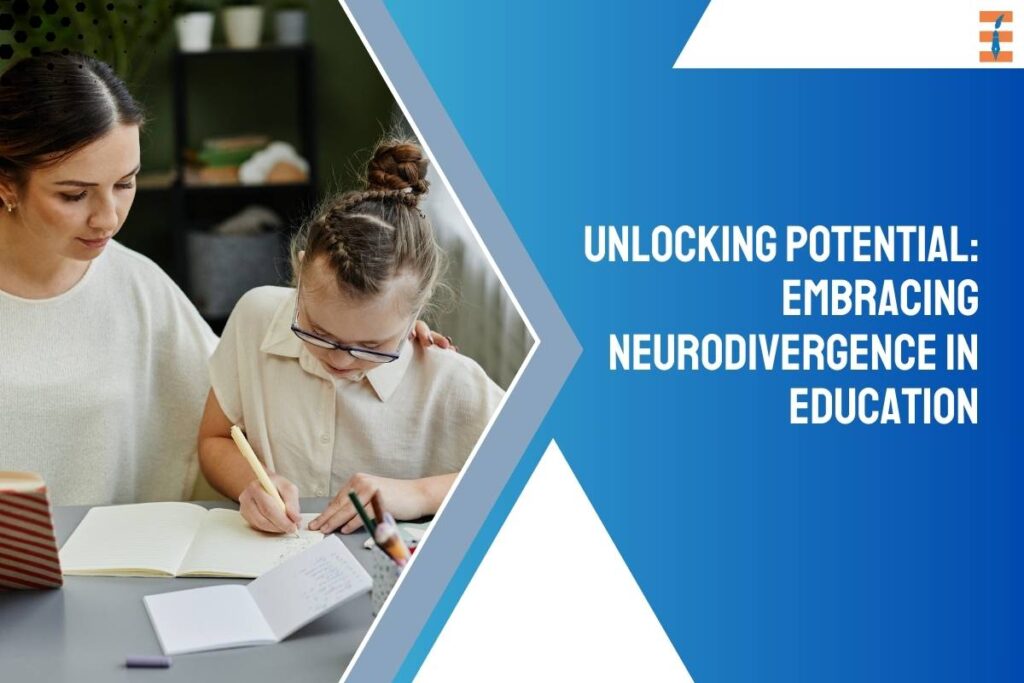In the ever-evolving landscape of education, one of the most significant shifts in recent years has been the recognition and embrace of neurodivergent students. Understanding and catering to the unique needs of individuals with diverse neurological profiles such as autism, ADHD, dyslexia, and more is not just a moral imperative but also a pathway to unlocking untapped potential and fostering inclusivity within educational settings.
Neurodivergence in education refers to the idea that neurological differences are natural variations of the human brain rather than deficits or disorders. This perspective challenges traditional views that often pathologize differences and instead celebrate the richness and diversity of human cognition and perception.
Creating Inclusive Environments

Central to the concept of neurodivergence in education is the creation of inclusive environments that accommodate a wide range of learning styles and preferences. This goes beyond mere accessibility to physical spaces; it encompasses curriculum design, teaching methods, assessment strategies, and overall attitudes toward neurodivergent individuals.
When educators embrace Neurodivergence in education, they recognize that a one-size-fits-all approach to education is ineffective and unfair. Neurodivergent students may require different instructional strategies, alternative forms of assessment, and supportive accommodations to thrive academically and socially. By adopting Universal Design for Learning (UDL) principles, educators can proactively design learning experiences that are flexible and responsive to individual differences.
Supporting Neurodivergent Students
Effective support for neurodivergent students begins with accurate identification and understanding of their unique strengths and challenges. This requires collaboration among educators, parents, and relevant professionals such as special education specialists, psychologists, and therapists.
Early intervention and ongoing assessment are crucial to providing targeted support. Educators should be trained to recognize signs of neurodivergence and to implement evidence-based interventions that promote learning and well-being. This may include personalized learning plans, sensory-friendly classrooms, assistive technologies, social skills training, and behavioral supports tailored to individual needs.
Shifting Perspectives
A key aspect of embracing neurodivergence in education is shifting perspectives within educational institutions and society at large. This involves challenging stereotypes, reducing stigma, and promoting acceptance and celebration of neurodiversity. When neurodivergent students feel valued and accepted for who they are, they are more likely to engage in learning, build self-confidence, and pursue their goals with enthusiasm.
Educators play a pivotal role in fostering positive attitudes towards neurodivergence among students, colleagues, and the broader community. By incorporating diverse perspectives into the curriculum, showcasing role models who are neurodivergent, and promoting empathy and acceptance, schools can cultivate a culture of inclusivity and respect for neurological differences.
Innovations in Neurodivergent in Education

Advancements in technology have opened up new possibilities for supporting neurodivergence in education students. From speech-to-text software for students with dyslexia to interactive apps for improving executive functioning skills in students with ADHD, technology can be a powerful tool for leveling the playing field and enhancing learning outcomes.
Virtual reality (VR) and augmented reality (AR) are also being explored as tools for creating immersive and engaging learning experiences that cater to diverse learning styles. These technologies can simulate real-world scenarios, provide immediate feedback, and customize content based on individual preferences, making learning more accessible and enjoyable for neurodivergent students.
Empowering Neurodivergent Voices
Embracing neurodivergence in education is not just about providing support and accommodations; it’s also about empowering neurodivergent individuals to share their unique perspectives and talents with the world. Schools can create opportunities for students to showcase their strengths through projects, presentations, artistic endeavors, and extracurricular activities that highlight diverse talents and abilities.
Peer mentoring programs, student-led clubs focused on neurodiversity awareness, and inclusive leadership opportunities can also play a role in empowering neurodivergent voices and fostering a sense of belonging and pride within the school community.
Challenges and Opportunities

While progress has been made in recognizing and supporting neurodivergence in education, there are still challenges to address. Limited resources, lack of training for educators, stigma and misconceptions about neurodiversity, and barriers to accessing appropriate services are among the obstacles that need to be overcome.
However, these challenges also present opportunities for collaboration, innovation, and advocacy. By investing in professional development for educators, promoting research and evidence-based practices, partnering with community organizations and advocacy groups, and amplifying the voices of neurodivergent individuals and their families, we can create more inclusive and equitable educational experiences for all students.
Conclusion
Embracing neurodivergence in education is a journey towards creating inclusive, equitable, and empowering learning environments where every student can thrive and reach their full potential. By recognizing and celebrating neurological differences, advocating for meaningful supports and accommodations, promoting positive attitudes and acceptance, leveraging technology and innovation, and empowering neurodivergent voices, we can transform education for the better and build a more inclusive society for generations to come.

